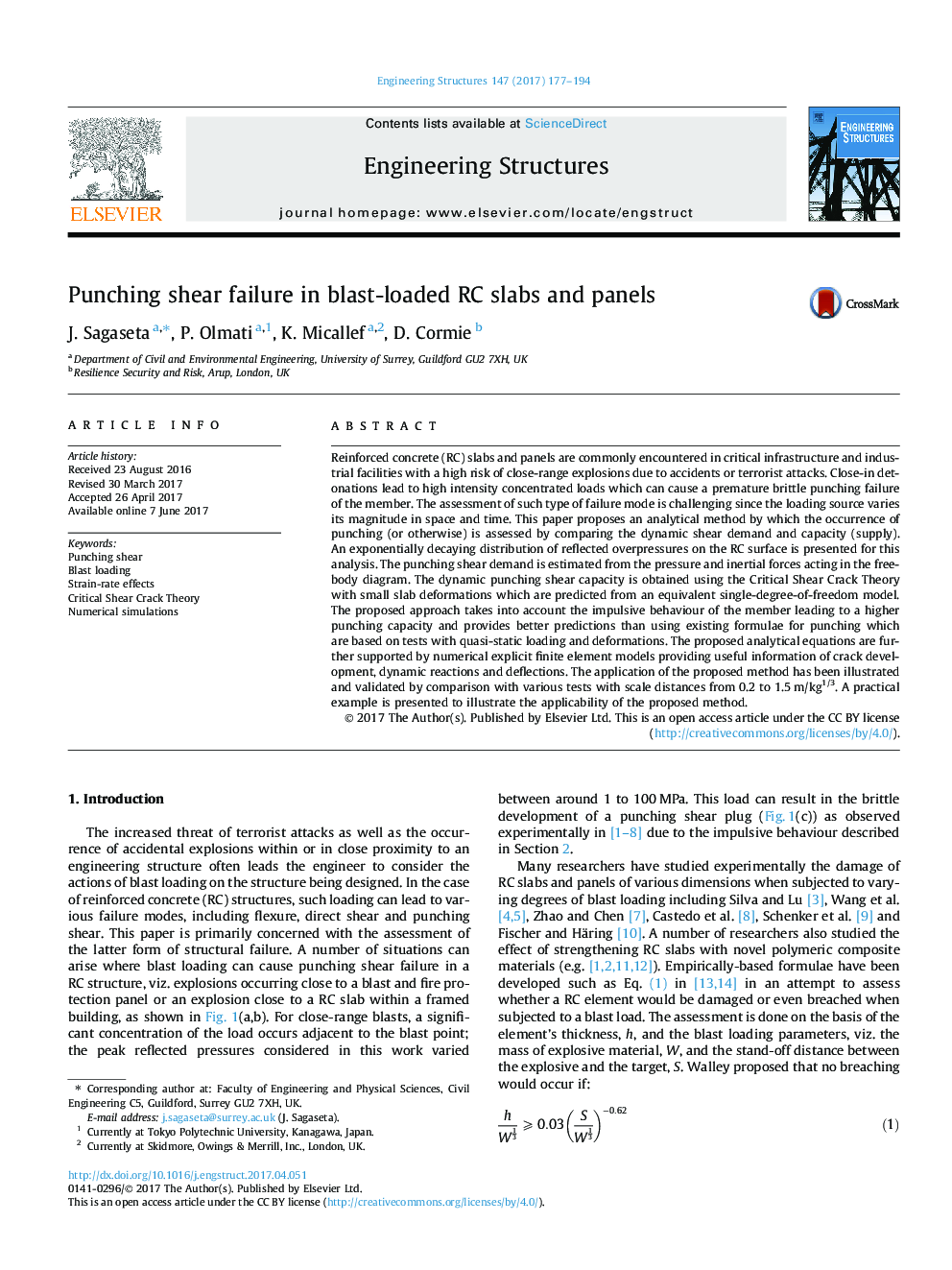| Article ID | Journal | Published Year | Pages | File Type |
|---|---|---|---|---|
| 4919904 | Engineering Structures | 2017 | 18 Pages |
Reinforced concrete (RC) slabs and panels are commonly encountered in critical infrastructure and industrial facilities with a high risk of close-range explosions due to accidents or terrorist attacks. Close-in detonations lead to high intensity concentrated loads which can cause a premature brittle punching failure of the member. The assessment of such type of failure mode is challenging since the loading source varies its magnitude in space and time. This paper proposes an analytical method by which the occurrence of punching (or otherwise) is assessed by comparing the dynamic shear demand and capacity (supply). An exponentially decaying distribution of reflected overpressures on the RC surface is presented for this analysis. The punching shear demand is estimated from the pressure and inertial forces acting in the free-body diagram. The dynamic punching shear capacity is obtained using the Critical Shear Crack Theory with small slab deformations which are predicted from an equivalent single-degree-of-freedom model. The proposed approach takes into account the impulsive behaviour of the member leading to a higher punching capacity and provides better predictions than using existing formulae for punching which are based on tests with quasi-static loading and deformations. The proposed analytical equations are further supported by numerical explicit finite element models providing useful information of crack development, dynamic reactions and deflections. The application of the proposed method has been illustrated and validated by comparison with various tests with scale distances from 0.2 to 1.5Â m/kg1/3. A practical example is presented to illustrate the applicability of the proposed method.
